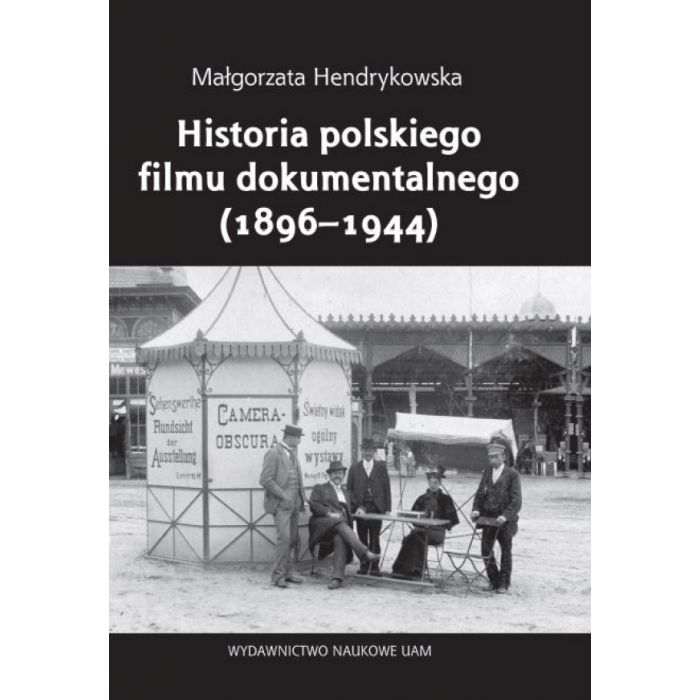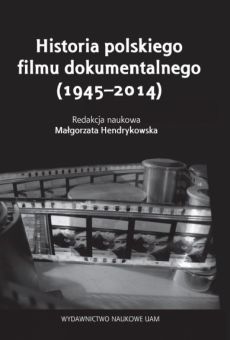Historia polskiego filmu dokumentalnego (1896–1944)
- In Stock: in stock
- ISBN: 978-83-232-2805-9
- Category: Film Studies
- Year of publication: 2015
NAGRODA w 9. edycji Nagród Polskiego Instytutu Sztuki Filmowej w kategorii: książka o tematyce filmowej
Nagroda Rektora Uniwersytetu Warszawskiego dla Najlepszej Publikacji Akademickiej w Dziedzinie Nauk Społecznych i Humanistycznych w Konkursie ACADEMIA 2016, X Targi Książki Akademickiej i Naukowej ACADEMIA 2016
Nagroda Dziennikarzy, 19. Poznańskie Dni Książki nie tylko naukowej
NOMINACJA do Nagrody im. Bolesława Michałka 2015/2016 za najlepszą książkę filmową przyznawanej przez miesięcznik KINO
Autorskie opracowanie Małgorzaty Hendrykowskiej przedstawia wielkie bogactwo polskiego filmu niefikcjonalnego pierwszej połowy XX w. w kontekście społecznym i politycznym. Autorka krok po kroku demonstruje, jak postrzegać film dokumentalny w świetle sztuk plastycznych, fotografii prasowej i kultury popularnej. Opierając się na materiałach archiwalnych (zachowało się ok. 15–20% przedwojennej produkcji), informacjach prasowych i innych publikacjach, dokonuje rekonstrukcji nieistniejącego już dziś materiału. Jako pierwsza przedstawia w formie katalogu niemal wszystkie tytuły filmów niefikcjonalnych, które ukazały się w latach 1895–1944.
This book reconstructs changes in the history of non-fiction films in the Polish lands that were annexed by three partitioning powers - during the Great War as well as during the period of Poland's independence and occupation. Thus, it shows how non-fiction cinema functioned at the turn of the 20th century and how it grew in importance during the Great War. The book presents the first decade of the period of Poland's independence and several overlapping directions in the development of documentaries: film chronicles (newsreels), current affairs programs as well as films promoting knowledge about Poland, i.e. Polish history and tradition, which were mainly aimed to unite the Polish lands in the minds of Poles from the territories that had previously been annexed by three partitioning powers. In the 1930s, following several years of efforts to introduce sound to cinema, non-fiction films became more involved in the state's current politics than before. In the mid-1930s documentary cinema started to attract attention.These documentaries, some of which were medium- and full-length films, were shot by filmmakers and cinematographers who were already fully aware of the need to extensively document economic, social and cultural life. The author shows how these films functioned as information sources and portrays documentary cinema's relation to the social, political and artistic spheres. The final part of the book deals with documentaries that were made during the war and occupation. This book is the first comprehensive study of this kind that examines non-fiction cinema. It contains a catalog of Polish non-fiction films that were screened in movie theaters in the years 1896-1944. This is the first such catalog that has been created in Poland.
| Detailed information | |
|---|---|
| Wstęp |
Download file

|
|
|
|
| Publication Version | printed |
| Format | 17,0 x 24,0 |
| Title (EN) | History of Polish Documentary Films (1896–1944) |
| Type of publication | Monografia |
| Edition | I |
| Series | Filmoznawcza nr 13 |
| ISSN | 1642-8595 |
| ISBN | 978-83-232-2805-9 |
| Number of pages | 686 |
| Number of publishing sheets | 45,00 |
| Type of binding | hardcover |

